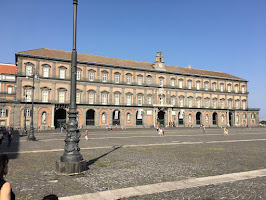The colourful life of an influential literary figure
 |
| A portrait of Giambattista Marino by Caravaggio, painted in about 1600 |
Marino’s poetry was translated into other languages and many other poets imitated his use of complicated wordplay, elaborate conceits and metaphors.
But although Marino’s work was praised throughout Europe, he led a chaotic life, was frequently short of money and at times arrested and imprisoned for alleged immorality.
Marino, sometimes referred to as Marini, was born in Naples in 1569. He trained for the law, under pressure from his parents, but later rebelled and refused to practise his profession.
From 1590 onwards, he spent his time travelling in Italy and France and enjoying the success of his poetry. His work was circulated in manuscript form to great acclaim and later in his life he managed to get some of it published, despite censorship.
In 1596 he wrote La Sampogna (The Syrinx), a series of sensual verses, but he was unable to publish them until 1620.
While working as secretary to a Neapolitan prince he was arrested in both 1598 and 1600 on charges of immorality, but on both occasions his admirers managed to secure his release from prison. One of his arrests was for procuring an abortion for the daughter of the Mayor of Naples and the other for forging episcopal bulls to save the life of a friend who had been involved in a duel.
Some of his defenders and some of his detractors have claimed that Marino himself had homosexual tendencies, but this practice was persecuted during the Counter Reformation and so Marino would not have been open about it.
.png) |
| The front cover of an edition of Marino's Adone, dated 1623 |
But in 1602 he was able to publish some of his early poetry as Le rime (The Rhymes) and La lira (The Lyre).
While living in Turin between 1608 and 1615, he enjoyed the patronage of the Duke of Savoy, but he was the victim of an assassination attempt by a rival poet and he was imprisoned yet again after writing satirical poems.
After friends had managed to secure his release, Marino went to Paris, where he lived until 1623 under the patronage of Marie de’ Medici and her son, Louis XIII.
While in Paris, Marino published his most important work, Adone, an epic poem of 45,000 lines that tells the love story of Venus and Adonis. This was dedicated to Louis XIII. Although critics have praised some of its brilliant passages, they have also criticised the poet’s excessive use of wordplay and metaphors in it.
Marino returned to Italy in 1623 and lived in Naples until his death. He is buried in the Chiesa dei Santi Apostoli in Naples.
Marinism, also sometimes referred to as Secentismo, 17th century style, is a reaction against classicism and uses extravagant metaphors and hyperbole to tell stories with the intention of startling the reader. Marino’s imitators carried this style to such excess that by the end of the 17th century the term marinism began to be used in a pejorative way.
However, after World War II, there was a revival of interest in this style of poetry and a reassessment of the merits of Marino and Marinism.
The Cambridge History of Italian Literature judged Marino to be one of the greatest Italian poets of all time.
Travel tip:The western facade of the Royal Palace,
overlooking Piazza del Plebiscito
Giambattista Marino would have been able to admire the newly built Royal Palace in Naples when he returned from France to live in the city again in 1623. The palace, which opens on to the Piazza del Plebiscito, was completed in 1620 to designs by the architect Domenico Fontana. In 1734, with the arrival of Charles III of Spain to Naples, the palace became the royal residence of the Bourbons. Additions have been made over the years, including the connecting Teatro San Carlo, which opened in 1737 and is now the oldest working opera house in the world. The series of niche statues on the western facade, the one that faces the piazza, were added in 1888, commissioned by King Umberto I of Savoy.
Travel tip:
The nave of the church of Santi Apostoli
in Naples, where Marino is buried
Marino’s tomb is in the Chiesa dei Santi Apostoli in Via Anticaglia in Naples, not far from the historic centre of the city. The Baroque church was built on the site of a Roman temple and given to the Theatine Order in 1570. A cloister and monastery was added in 1590 and early in the 17th century, the church was reconstructed by Giacomo Conforti. Inside, visitors can admire a large fresco depicting Paradise (1684) by Giovanni Battista Benasca in the cupola and works by other painters including Marco da Siena, Luca Giordano and Francesco Solimena.
Also on this day:
1347: The birth of Saint Catherine of Siena
1541: The birth of Francesco I, Grand Duke of Tuscany
1546: The birth of poet and courtesan Veronica Franco
1927: The birth of politician Tina Anselmi, Italy’s first female minister
1940: The birth of pop megastar Mina
